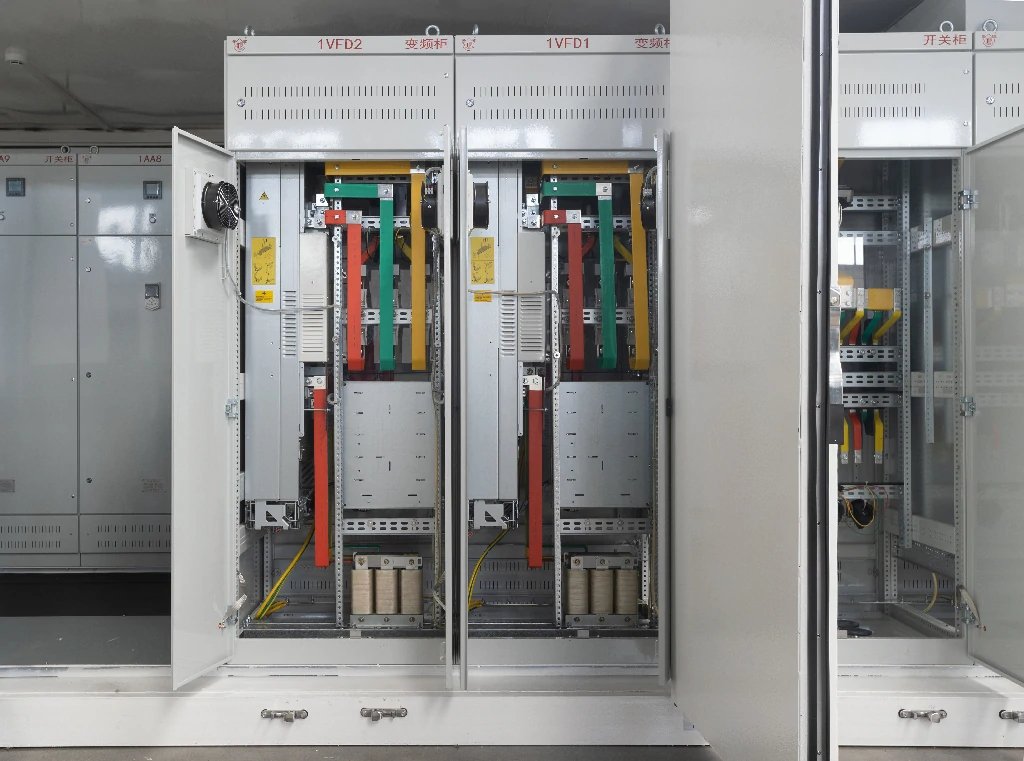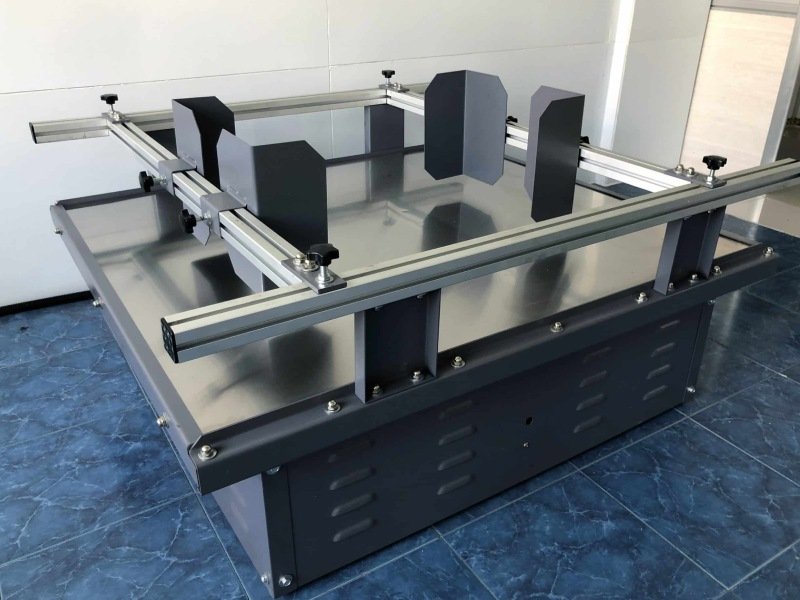In the competitive landscape of the electrical and cabinetry industries, the choice of hardware can significantly influence the functionality and aesthetic appeal of products. Conceal hinges, known for their hidden design and robust performance, have emerged as a preferred option among manufacturers and suppliers. This guide aims to provide newbie B2B buyers with a thorough understanding of conceal hinges, covering their applications, types, installation methods, benefits, maintenance, and how they compare to other hinge types.
Understanding Conceal Hinges
Conceal hinges, or hidden hinges, are designed to remain out of sight when a door or cabinet is closed. This feature provides a clean and polished look, making them ideal for modern designs where visual appeal is paramount. The mechanics of these hinges allow for smooth operation, which is particularly advantageous in high-traffic areas.
Key Features
- Aesthetic Design: Conceal hinges contribute to a minimalist look, enhancing the overall design of cabinetry and furniture. The absence of visible hardware creates an uncluttered appearance, aligning with contemporary design trends.
- Durability: Constructed from high-quality materials such as stainless steel or brass, conceal hinges are built to withstand daily wear and tear. Their durability makes them suitable for both residential and commercial applications.
- Security: Many conceal hinges are designed with security features, such as tamper-resistant screws and reinforced structures, making them ideal for applications that require enhanced protection.
Applications in the Electrical Industry
Conceal hinges are versatile and can be found in a variety of applications within the electrical industry. Their ability to blend functionality with aesthetic appeal makes them a popular choice among B2B buyers.
- Control Cabinets Control cabinets are essential for housing electrical components and controls. Conceal hinges allow for easy access to these components while maintaining a professional appearance. This is particularly important in environments where neatness and organization are critical.Example: In manufacturing plants, control cabinets often house important machinery controls. Using conceal hinges ensures that maintenance personnel can access these controls without the distraction of visible hardware.
- Distribution Boards Distribution boards manage and distribute electrical power, making their accessibility crucial for maintenance and safety. Conceal hinges offer a streamlined solution that keeps the focus on the board’s functionality while ensuring that users can easily access the internal components.Example: In commercial buildings, distribution boards may be installed in common areas. Conceal hinges help maintain the building's aesthetics while allowing facility managers to perform necessary inspections.
- Switchgear Enclosures Switchgear enclosures protect electrical equipment and control systems. The use of conceal hinges in these enclosures allows for secure and visually appealing access, which is essential for compliance with safety standards and regulations.Example: In power generation facilities, switchgear enclosures equipped with conceal hinges facilitate quick access for emergency maintenance, ensuring safety without compromising on design.
- Electrical Panels Electrical panels require secure access for maintenance and inspections. Conceal hinges provide a functional yet aesthetically pleasing solution, ensuring that the panels blend seamlessly into their surroundings.Example: In residential installations, electrical panels fitted with conceal hinges can be integrated into cabinetry, maintaining the home's aesthetic while providing necessary access.
- Equipment Housing For various electrical equipment, conceal hinges allow for effective housing solutions that protect internal components while providing easy access for repairs or adjustments.Example: In server rooms, equipment housings often utilize conceal hinges to protect servers while allowing for quick access during routine maintenance.
Types of Conceal Hinges
Choosing the right type of conceal hinge is critical for ensuring that the installation meets both aesthetic and functional requirements. Here are the most common types of conceal hinges available:
- Full Overlay Hinges Full overlay hinges are designed for cabinetry where the door completely covers the cabinet's face. They provide a seamless appearance and are commonly used in modern kitchen designs.Example: In contemporary kitchens, full overlay cabinets create a sleek look, and using conceal hinges enhances this design by eliminating visible hardware.
- Half Overlay Hinges These hinges are used when two cabinet doors overlap partially. This design allows one door to open without blocking the other, making them ideal for corner cabinets or double-door applications.Example: In a pantry with double doors, half overlay hinges allow for easy access to contents without the need for removing one door to reach the other.
- Inset Hinges Inset hinges are suitable for doors that fit within the cabinet frame, providing a flush appearance when closed. This style is often used in traditional cabinetry.Example: In antique-style furniture, inset hinges maintain the traditional aesthetic while providing modern functionality.
- Adjustable Hinges These hinges can be adjusted after installation, allowing for fine-tuning of the door’s alignment. This feature is especially useful in applications where precision is crucial.Example: In a commercial environment where heavy usage may cause misalignment, adjustable hinges ensure that doors remain functional over time.
- Self-Closing Hinges Designed to automatically close the door after it has been opened, self-closing hinges enhance safety and energy efficiency. They are particularly useful in high-traffic areas.Example: In restrooms or kitchens, self-closing hinges help prevent doors from remaining open, promoting better hygiene and energy efficiency.
Installation Methods
Installing conceal hinges requires attention to detail to ensure proper functionality and aesthetic appeal. Here’s a comprehensive guide to the installation process:
- Preparation Steps
- Measure and Mark: Accurately measure and mark the hinge locations on both the door and the cabinet or frame. Precision is key to ensuring a seamless installation.
- Choose the Right Tools: Gather all necessary tools, including a drill, router, screwdriver, and a level. Having everything on hand will streamline the installation process.
- Detailed Installation Process
- Routing or Boring: Use a router or drill to create pockets in the door and frame for the hinge plates. The depth of the routing should match the thickness of the hinge to allow for a flush fit.
- Aligning the Hinge: Place the hinge in the routed pocket and check its alignment with a level. Proper alignment is essential for smooth operation.
- Securing the Hinge: Fasten the hinge to both the door and the frame using screws. Take care to ensure that screws are tightened adequately without damaging the material.
- Testing the Door Movement: Once installed, open and close the door several times to test for smooth operation. Make adjustments as necessary to address any issues.
- Testing and Finishing Touches
- After installation, verify that all screws are secure and the door operates effortlessly. If needed, apply paint or finish to the hinges to match the surrounding cabinetry or enclosure for a cohesive look.
Benefits of Using Conceal Hinges
The advantages of conceal hinges extend beyond aesthetics and durability:
- Aesthetic Appeal: The hidden design allows for a minimalist aesthetic, which is particularly appealing in modern cabinetry and furniture designs.
- Durability: Made from high-quality materials, conceal hinges are designed to withstand heavy usage, making them a long-lasting choice for B2B buyers.
- Security Features: Many models incorporate advanced security features, such as tamper-resistant designs, ensuring that they are suitable for sensitive applications.
Comparison with Other Hinge Types
When considering hinges for various applications, it’s important to compare conceal hinges with other common hinge types:
- Visible Hinges vs. Conceal Hinges: Visible hinges can detract from the overall aesthetic of cabinetry and doors. In contrast, conceal hinges offer a cleaner look, which is essential in professional settings. However, visible hinges may be easier to install and adjust due to their accessibility.
- Pros and Cons: While conceal hinges enhance the visual appeal and security of installations, they may require more precise installation techniques compared to traditional hinges. It’s crucial for buyers to weigh these factors based on their specific application needs.
Maintenance and Care
To ensure the longevity and optimal performance of conceal hinges, consider the following maintenance tips:
- Regular Inspections: Periodically check hinges for signs of wear, such as rust or misalignment. Addressing these issues early can prevent more significant problems down the line.
- Lubrication: Apply a lubricant specifically designed for hinges to prevent squeaking and ensure smooth operation. Regular lubrication can extend the life of the hinges.
- Cleaning: Keep hinges clean and free from debris to maintain their functionality. Use a soft cloth and mild cleaner to wipe away dust and grime.
Conclusion
Conceal hinges are a vital component in the electrical and cabinetry industries, offering functionality, aesthetic appeal, and durability. For newbie B2B buyers, understanding the various types, applications, installation methods, and maintenance requirements of conceal hinges is essential for making informed purchasing decisions. By selecting the right hinges and ensuring proper installation and care, you can enhance the quality and attractiveness of your products, positioning your business for success in a competitive market.







